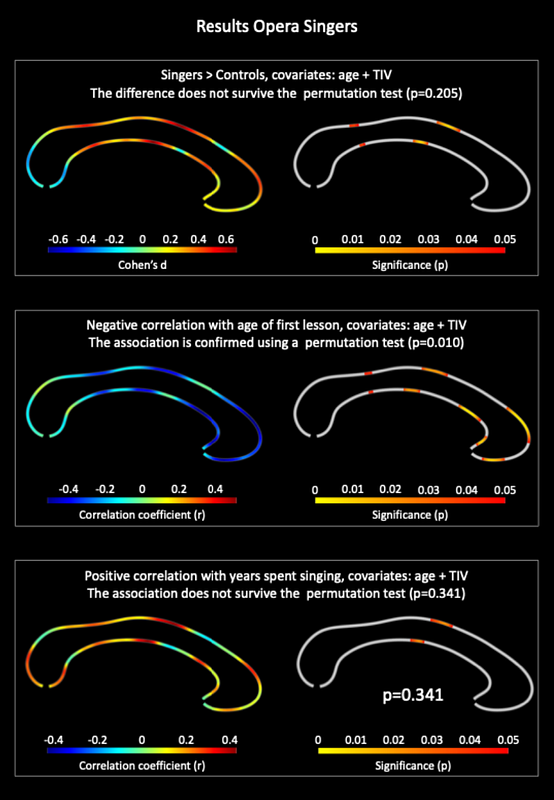Increased Callosal Thickness in Early Trained Opera Singers

Increased Callosal Thickness in Early Trained Opera Singers
Kleber, B.; Dale, C.; Zamorano, A. M.; Lotze, M.; Luders, E.; Kurth, F.
AbstractExtensive research has shown how the corpus callosum adapts to early sensorimotor training in instrumental musicians, yet less is known about these effects in professional singers. This study used high-resolution MRI to investigate variations in callosal thickness in relation to vocal training in 55 participants, including 27 professionally trained opera singers and 28 non-singers. Results indicated trend-level differences with thicker callosal regions in singers, particularly at the anterior-posterior midbody border and the isthmus, though these did not survive corrections for multiple comparisons. However, a significant negative correlation between age at first singing lesson and callosal thickness was found in the anterior third (rostrum, genu, rostral body), the anterior-posterior midbody border, and the isthmus, suggesting that early vocal training facilitates lasting neuroplastic adaptations in these regions. Additionally, a positive trend between years of professional singing and greater thickness in the midbody was observed but did not remain significant after correction for multiple comparisons. Greater callosal thickness likely enhances interhemispheric connectivity to meet the demands of operatic performance, highlighting the adaptability of the corpus callosum to early, sustained sensorimotor training. By extending evidence from instrumental musicians to singers, these results underscore developmental timing as a key factor in how sensorimotor training shapes brain structure.